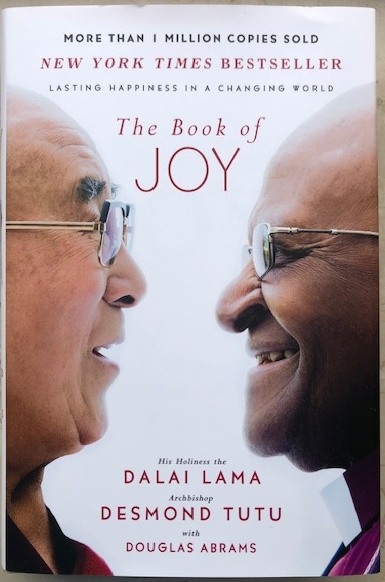What Leaders Can Learn from The Book of Joy
In the quiet of an early morning, a leader sits at their desk, the world outside still waking. On the table before them lies The Book of Joy, its pages worn from repeated readings. The leader reflects on the wisdom within, searching for guidance not just for themselves, but for the people they serve. The voices of the Dalai Lama and Archbishop Desmond Tutu echo in their mind, gentle yet insistent: joy is not the absence of adversity, but the way we respond to it.
The Awakening: Discovering Joy Beyond Adversity
The leader remembers the first time they encountered this idea. It was during a period of organizational upheaval—budgets were tight, morale was low, and uncertainty clouded every decision. In those moments, the leader had believed that joy was a luxury, something to be postponed until the crisis had passed. But as they read the words of these two spiritual giants, a new perspective began to take root. Joy, they realized, was not a reward for overcoming hardship. It was a companion, available even in the midst of struggle.
This realization changed everything. The leader began to approach each day with a deliberate choice: to meet challenges with curiosity, to find gratitude in small victories, and to nurture hope even when the path ahead was unclear. They discovered that joy was not a fleeting emotion, but a way of being—a steady flame that could light the way for others.
The Living Organization: Seeing the Whole
As the leader’s perspective shifted, so too did their view of the organization. No longer did they see it as a machine to be optimized, but as a living ecosystem, each person a vital part of the whole. The Dalai Lama and Archbishop Tutu spoke often of interconnectedness, of the invisible threads that bind us together. The leader saw this truth reflected in every meeting, every hallway conversation, every moment of shared laughter or frustration.
They began to listen more deeply, to notice the subtle signs of burnout or exclusion. When one team struggled, the effects rippled outward, touching everyone. The leader understood that investing in well-being was not separate from driving results—it was essential to the health of the entire system. They made it a priority to connect teams, to foster trust, and to celebrate the unique contributions of each individual.
Compassion in Action: Leading with Heart
Compassion, the leader learned, was not a soft or sentimental quality. It was a discipline, a daily practice that required courage and humility. Inspired by the Dalai Lama’s insistence that compassion is a skill, the leader made it their mission to cultivate it within themselves and their organization.
They began to ask different questions—not just about performance, but about well-being. They checked in with employees who seemed withdrawn, offered support during difficult times, and made space for honest conversations. When tough decisions had to be made, the leader communicated with transparency and care, acknowledging the impact on those affected.
Compassion did not mean lowering standards. If anything, it raised the bar for humanity within the workplace. The leader saw that when people felt seen and valued, they brought their best selves to work. Teams became more resilient, more creative, and more willing to support one another through challenges.
Resilience Through Perspective: Weathering the Storms
There were still storms—unexpected setbacks, failures, and moments of doubt. But the leader remembered the stories of the Dalai Lama and Archbishop Tutu, who had faced exile, oppression, and loss, yet emerged with open hearts and playful spirits. Their secret, the leader realized, was perspective.
When difficulties arose, the leader paused to zoom out, to see the bigger picture. They encouraged their teams to view failures as teachers, not threats. They modeled vulnerability, admitting when they didn’t have all the answers or when mistakes were made. This openness built trust and gave others permission to take risks, knowing that setbacks were part of growth.
Perspective became a source of resilience, allowing the leader and their organization to weather storms with steadiness and hope.
Growth as a Way of Life
The leader also embraced the book’s message that joy is dynamic, always evolving. In a world of constant change, they knew that standing still was not an option. They committed to continuous growth—not just for themselves, but for everyone in the organization.
They sought feedback, asked new questions, and learned from those with different perspectives. They encouraged teams to experiment, to see mistakes as opportunities for learning, and to celebrate progress, no matter how incremental. Growth became woven into the culture, not as a quarterly initiative, but as a way of life.
The Ripple Effect: Joy as a Leadership Strategy
Over time, the leader noticed a transformation. The organization felt different—more connected, more resilient, more alive. People brought energy and creativity to their work. They supported one another, celebrated together, and faced challenges with courage.
The leader understood that this was the true legacy of The Book of Joy. Joy was not a distraction from the work of leadership—it was its foundation. By choosing joy, practicing compassion, nurturing resilience, and fostering growth, the leader had created a culture where performance and humanity thrived together.
Conclusion: The Leader’s Journey
As the sun rose higher, the leader closed the book, feeling a quiet sense of gratitude. The lessons of the Dalai Lama and Archbishop Tutu had become more than words on a page—they were a living guide, shaping every decision, every interaction, every day.
In the end, the leader knew that joy was not just a personal pursuit, but a collective journey. By leading with joy, they had helped others find their own light, even in the darkest of times. And in doing so, they had discovered the true power of leadership—not to control or command, but to inspire, connect, and uplift.




